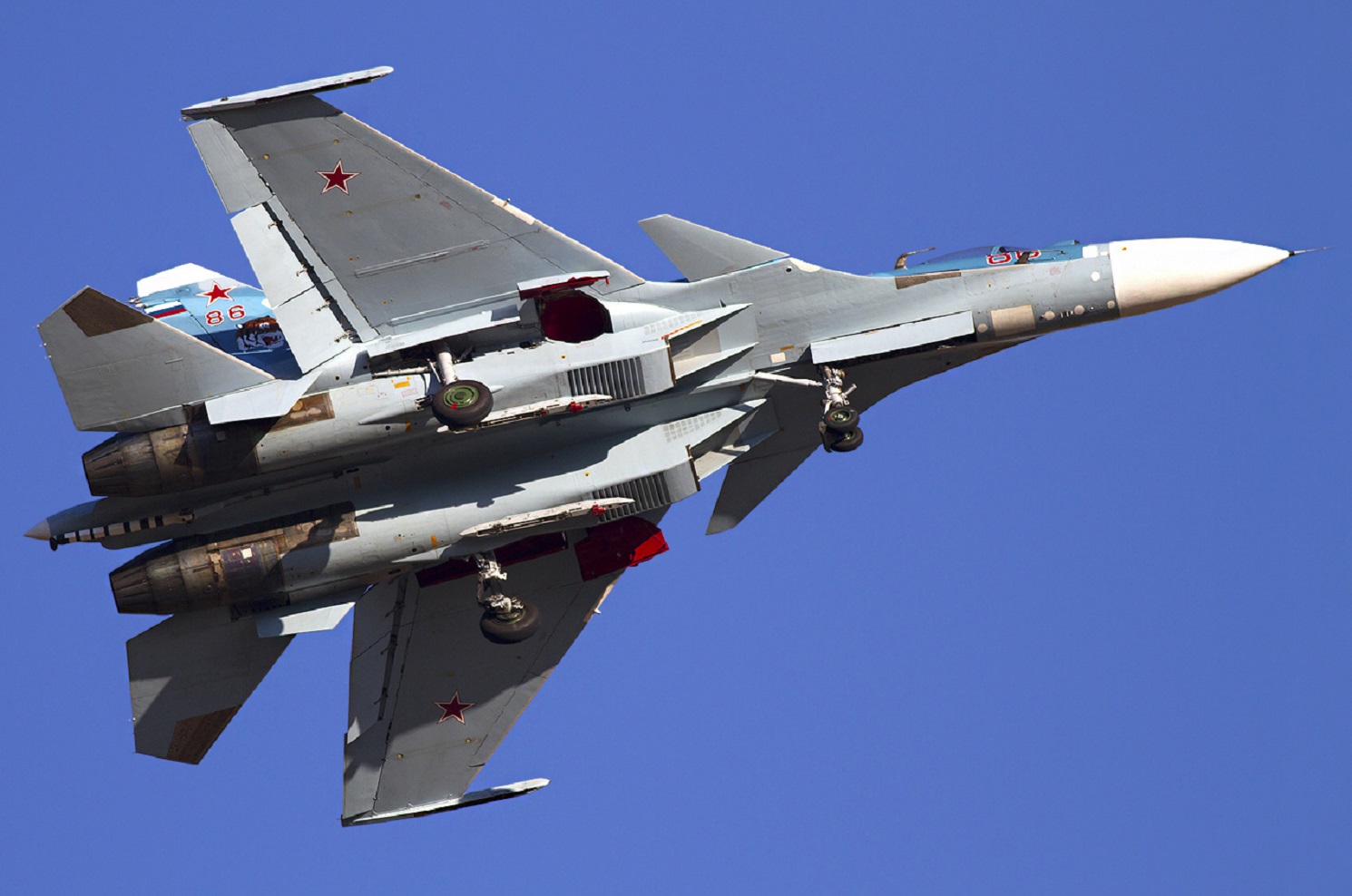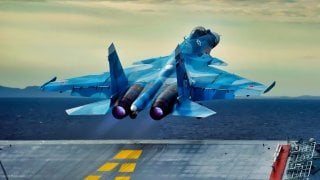Sukhoi Su-33: Russia’s Struggling Aircraft Carrier Fighter Should Retire
The Sukhoi Su-33, a carrier-capable fighter jet originally designed for the Soviet Union’s aircraft carriers, has faced numerous issues over the years, making it one of Russia's least successful aerial platforms.
Summary and Key Points: The Sukhoi Su-33, a carrier-capable fighter jet originally designed for the Soviet Union’s aircraft carriers, has faced numerous issues over the years, making it one of Russia's least successful aerial platforms.
-Despite being derived from the Su-27 Flanker, the Su-33 has struggled with reliability and performance, as evidenced by crashes during operations.
-Failed export attempts and competition from more capable aircraft like the MiG-29K and China's reverse-engineered J-15 have further diminished the Su-33’s relevance.
-Given its poor track record, the Russian government may consider retiring or scrapping the Su-33 fleet.
The Su-33: Russia’s Aircraft Carrier Fighter with a Troubled Past
The Sukhoi Su-33 multi-role fighter airframe was initially designed to ensure the Soviet Union’s aircraft carriers had a powerful jet to fly. Following the breakup of the USSR, a litany of Soviet-era equipment and platforms suffered from a lack of resources and prioritization as the new Russian government took form.
The Su-33 airframe may take the cake as Russia’s worst aerial performer though since the platform has faced so many issues over the years.
While the lackluster fighter jet is technically still in service with Russia’s Air Force today, the Kremlin should consider retiring or nixing the whole Su-33 program altogether in the near future.
Introducing the Su-33
During the 1970’s, the USSR’s sole carrier-capable airframe was unable to fulfill its intended role due to a lack of range and payload. During this time, the former-USSR instructed its engineers to construct a new fighter that would not hamper the capability of the country’s Project 1143 aircraft carriers. Like so many other modern Russian fighters, the Su-33 prototype was derived from the existing Su-27 “Flanker” fighter. Initially labeled the Su-27K, the Su-33 was later rebranded following its introduction to service in the late 1990’s.
Despite its superficial resemblance to the Su-27 Flanker, the Su-33 (dubbed Flanker-D by the North Atlantic Treaty Organization) sports several practical differences. The Su-33 possesses a reinforced undercarriage, folding wings, slightly more powerful.
Al-31F3 engines and more technical landing gear among other atypical capabilities than its predecessor. The Su-33’s design differences were intended to aid the airframe’s take-off and landing abilities on aircraft carriers. One additional difference between the two airframes is that the Su-33 Flanker-D has two more hardpoints than the Su-27 Flanker.
Ordnance-wise, the Su-33 can mount a wide variety of munitions on its external hardpoints. As summed up in an earlier article, these munitions include “R-27R1(ER1), R-27T1(ET1) and R-73E air-to-air missiles, S-8KOM, S-8OM, S-8BM S-13T, S-13OF and S-25-OFM-PU unguided missiles, Kh-25MP, Kh-31 and Kh-41 guided missiles, RBK-500 cluster bombs and electronic countermeasure pods.” The Flanker-D also sports 30mm Gsh-30-I cannons.
How a Su-33 crashed off the Mediterranean
The Su-33 platform gained some notoriety back in 2016, when one of these fighters crashed during flight operations off Russia’s Admiral Kuznetsov aircraft carrier. According to the official report, the combat jet crashed while attempting to land due to faulty wires.
Unfortunately, this crash wasn’t the first incident onboard the Admiral Kuznetsov during Moscow’s combat deployment off Syria. A few weeks prior, an Mig-29K fighter jet also crashed while recovering to the aircraft carrier.

The MiG-29K platform was notably meant to replace the Russian Navy’s fleet of Su-33 Flanker-D airframes, despite the fact the latter featured a much higher operating range and maneuverability potential. However, the MiG-29K fighter is better suited for ground strikes than the Su-33 and can carry a larger selection of munitions.
Sukhoi Su-33: A History of Failed Bids
Moscow has attempted to export off its remaining Su-33 fighters to foreign clients. In the early 2000’s, Beijing was set to procure the fighter platform, but the deal fell through due after it became known that China had already purchased an Su-33 jet from Ukraine which it planned to reverse-engineer.
In fact, China’s Shenyang J-15 fighter is widely believed to be a direct copycat of Russia’s Su-33 fighter.
The Su-33’s bleak track record and dismal operational history make the platform a prime candidate for early retirement. Moscow may actually be better just scrapping its remaining Flanker-D airframes altogether.
About the Author: Maya Carlin
Maya Carlin is an analyst with the Center for Security Policy and a former Anna Sobol Levy Fellow at IDC Herzliya in Israel. She has by-lines in many publications, including The National Interest, Jerusalem Post, and Times of Israel.
All images are Creative Commons and/or Shutterstock.


